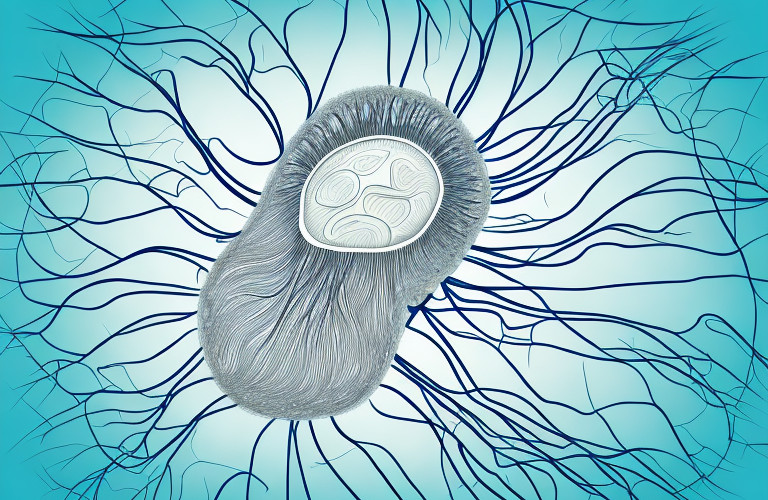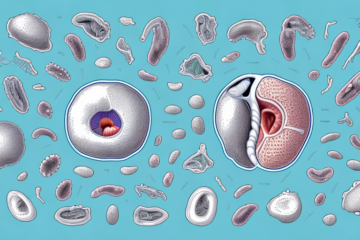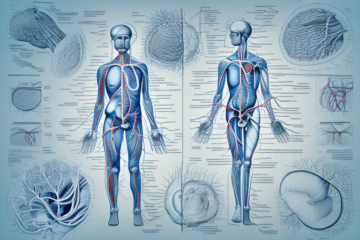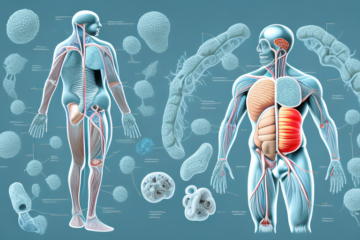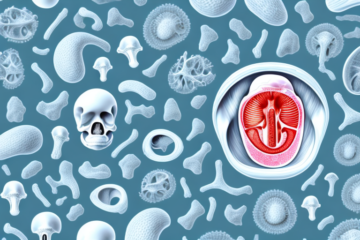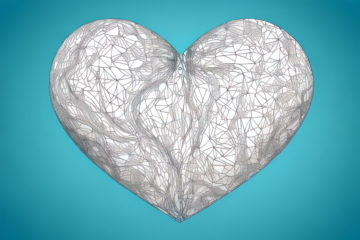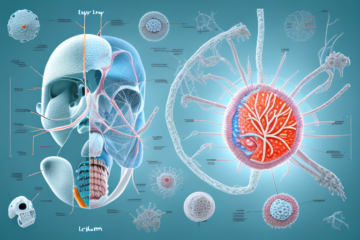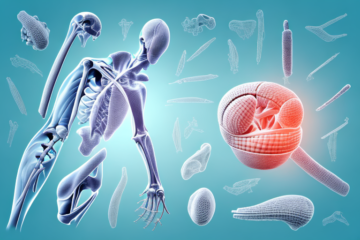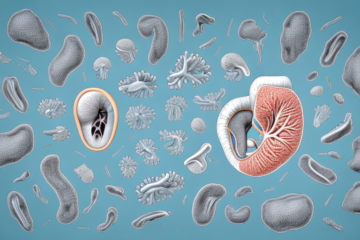When it comes to our hair, we often only consider its appearance and style. However, the hair follicle is the true workhorse of the hair. Understanding the function and anatomy of the hair follicle can provide insight into what affects hair growth and health. In this article, we will explore the basics of hair follicles, the growth cycle, factors that affect hair health, and more.
The Basics: What is a Hair Follicle and How Does it Work?
The hair follicle is a tiny organ in the skin that produces and regulates hair growth. It is responsible for the production of hair shaft, which extends from the follicle’s base to the skin’s surface. The hair follicle is located in the dermis layer of the skin, and each follicle contains a hair bulb, which has a matrix of cells that produce hair.
The hair follicle has two main components: the dermal papilla and the hair bulb. The dermal papilla is a small, cone-shaped structure at the base of the hair follicle. It is responsible for providing the hair bulb with nutrients and oxygen, which are essential for healthy hair growth. The hair bulb is the living part of the hair follicle; it contains the cells responsible for hair growth and pigmentation.
There are three phases of hair growth: anagen, catagen, and telogen. Anagen is the active growth phase, during which the hair bulb produces new hair cells. Catagen is the transitional phase, during which the hair follicle shrinks and detaches from the dermal papilla. Telogen is the resting phase, during which the hair follicle remains dormant until the next anagen phase begins.
The hair follicle is influenced by various factors, including genetics, hormones, and age. Androgenic hormones, such as testosterone, can stimulate hair growth in some areas of the body, while inhibiting it in others. As we age, the hair follicles shrink and produce thinner, shorter hair, leading to hair loss and baldness in some individuals.
Hair Growth Cycle: Understanding the Phases of Hair Growth
The hair growth cycle is a continuous process that includes three phases: the anagen phase, the catagen phase, and the telogen phase. During the anagen phase, the active growth phase, hair cells divide rapidly, and the hair shaft grows. This phase lasts for two to six years, and hair can grow up to 30 centimeters during this phase.
The catagen phase is the transitional phase, lasting for two to three weeks. During this phase, hair growth slows down, and the hair follicle shrinks. The hair detaches from the dermal papilla and starts to move towards the skin’s surface.
The telogen phase is the resting phase, which lasts for two to four months. During this phase, the hair follicle is in a state of rest, and hair does not grow. After the telogen phase, the hair follicle re-enters the anagen phase, and the hair growth cycle starts again.
It is important to note that the length of each phase can vary depending on factors such as age, genetics, and overall health. For example, as we age, the anagen phase may become shorter, resulting in thinner hair. Additionally, certain medical conditions or medications can disrupt the hair growth cycle, leading to hair loss or thinning. Understanding the hair growth cycle can help in identifying potential issues and taking steps to maintain healthy hair.
Factors that Affect Hair Growth and Health
Hair growth and health can be influenced by various factors, including genetics, hormones, nutrition, and environmental factors. Genetic factors play a vital role in determining hair growth and health. The shape of the hair follicle, the number of hair follicles, and the thickness and texture of the hair are all genetically determined.
Hormonal changes can also affect hair growth and health. Changes in hormone levels, such as during pregnancy or menopause, can cause hair to thin or fall out. Androgens, male hormones, can cause hair loss in both men and women and are commonly associated with male pattern baldness.
Nutrition is also essential for healthy hair growth. A balanced diet with sufficient protein, vitamins, and minerals is necessary for healthy hair growth. Deficiencies in vitamins such as biotin, zinc, and iron can lead to hair loss or poor hair quality.
Environmental factors such as pollution, UV radiation, and harsh styling practices can also affect hair growth and health. Excessive heat and the use of chemicals on hair can damage hair follicles, leading to hair loss or poor hair health.
Stress is another factor that can affect hair growth and health. High levels of stress can cause hair to fall out or become brittle and weak. This is because stress can disrupt the natural hair growth cycle, leading to hair loss or stunted growth.
Age is also a factor that can affect hair growth and health. As we age, our hair naturally becomes thinner and weaker. This is because the hair follicles shrink and produce less hair. Additionally, the production of natural oils that keep hair healthy and shiny decreases with age, leading to dry and brittle hair.
Types of Hair Follicles: Terminal vs Vellus Hair
There are two types of hair follicles: terminal hairs and vellus hairs. Terminal hairs are thick, long, and pigmented, and they grow on areas such as the scalp and pubic area. Vellus hairs are thin, short, and non-pigmented, and they grow on areas such as the face and arms.
The type of hair follicle determines the hair growth cycle, with terminal hairs having a longer growth cycle than vellus hairs. The ratio of terminal and vellus hairs on the body is also genetically determined.
Terminal hairs are also more likely to be affected by hormonal changes, such as during puberty or pregnancy, leading to changes in hair thickness and distribution. Vellus hairs, on the other hand, are less affected by hormonal changes and remain thin and short throughout a person’s life.
In some medical conditions, such as hirsutism, there is an overgrowth of terminal hairs in areas where vellus hairs are normally found, such as the face and chest in women. This can be caused by hormonal imbalances or certain medications, and can be treated with hair removal methods such as laser therapy or electrolysis.
Anatomy of a Hair Follicle: Layers and Structures Explained
The hair follicle has several layers that are essential for hair growth and health. The outermost layer is the epidermal infundibulum, which connects the hair follicle to the skin’s surface. The innermost layer is the dermal papilla, which contains the blood vessels that provide nutrients and oxygen to the hair bulb.
The hair shaft extends from the hair bulb through the inner and outer root sheaths. The inner root sheath is made up of cuticle cells that overlap, protecting the hair shaft. The outer root sheath consists of several layers of cells that provide structural support to the hair follicle.
Another important structure of the hair follicle is the sebaceous gland, which produces sebum, a natural oil that lubricates and protects the hair and skin. The arrector pili muscle is also present, which is responsible for causing the hair to stand up when we experience emotions such as fear or cold.
The hair follicle is a complex structure that plays a crucial role in the health and appearance of our hair. Understanding its anatomy and function can help us take better care of our hair and prevent common hair problems such as hair loss and breakage.
Sebaceous Glands: The Role in Maintaining Healthy Hair
Sebaceous glands are small glands located next to the hair follicle that produce an oily substance called sebum. This sebum helps to lubricate and moisturize the hair and skin, protecting them from damage and drying out. Sebum production is regulated by hormones and can be affected by changes in hormone levels.
In addition to its moisturizing properties, sebum also plays a role in protecting the hair and scalp from harmful bacteria and fungi. It contains antimicrobial properties that help to prevent infections and keep the scalp healthy. However, excessive sebum production can lead to oily hair and scalp, which can cause discomfort and even contribute to hair loss. It is important to maintain a balance of sebum production to ensure healthy hair and scalp.
Hair Follicle Disorders: Causes, Symptoms and Treatment Options
Several hair follicle disorders can affect the hair growth cycle and hair health. Alopecia is a medical condition that causes hair loss on the scalp and other areas of the body. Telogen effluvium is a temporary hair loss condition that can be caused by stress, illness, or hormonal changes.
There are several treatment options available for hair follicle disorders, including medication, light therapy, hair transplantation, and lifestyle changes. It is important to consult a healthcare professional for proper diagnosis and treatment.
Another hair follicle disorder is known as hirsutism, which is characterized by excessive hair growth in women in areas such as the face, chest, and back. This condition is often caused by hormonal imbalances and can be treated with medication or hair removal techniques such as laser therapy or electrolysis.
Trichotillomania is a hair-pulling disorder that can lead to hair loss and damage to the hair follicles. This condition is often linked to anxiety and stress and can be treated with therapy and medication.
Genetic Factors: How Inherited Genes Influence Hair Growth and Loss
Genetic factors play a crucial role in determining hair growth and loss. Genes determine the shape and growth cycle of hair follicles, as well as hair thickness and texture. Genetic factors also play a role in hair loss conditions such as male pattern baldness.
Research has shown that certain genes are associated with an increased risk of hair loss. For example, variations in the AR gene have been linked to male pattern baldness, while variations in the EDA2R gene have been associated with female pattern hair loss. However, it’s important to note that genetics is not the only factor that contributes to hair loss.
In addition to influencing hair growth and loss, genetic factors can also impact the way hair responds to certain treatments. For example, some people may be more likely to experience side effects from hair loss medications due to their genetic makeup. Understanding the role of genetics in hair growth and loss can help individuals make informed decisions about their hair care and treatment options.
Hormonal Changes and Their Effects on the Hair Follicle
Hormonal changes can affect hair growth and health. Changes in hormone levels can cause hair loss or thinning, and conditions such as polycystic ovary syndrome (PCOS) can cause excessive hair growth. Hormonal changes during puberty and menopause can also affect hair growth and quality.
Additionally, hormonal imbalances caused by thyroid disorders can also impact hair growth. Hypothyroidism, or an underactive thyroid, can cause hair to become brittle and thin, while hyperthyroidism, or an overactive thyroid, can cause hair to become fine and fragile. It is important to maintain a healthy balance of hormones to promote optimal hair growth and health.
Nutritional Deficiencies and Their Impact on Hair Health
Nutrition is essential for healthy hair growth and quality. Deficiencies in vitamins and minerals such as biotin, zinc, and iron can lead to hair loss or poor hair quality. A balanced diet with sufficient protein, vitamins, and minerals is necessary for healthy hair growth.
Biotin, also known as vitamin H, is a water-soluble vitamin that plays a crucial role in maintaining healthy hair. It helps to strengthen the hair follicles and prevent hair breakage. Biotin deficiency can lead to hair thinning and hair loss. Foods rich in biotin include eggs, nuts, and whole grains.
Zinc is an essential mineral that helps to maintain healthy hair and scalp. It plays a vital role in the production of new hair cells and the maintenance of the oil-secreting glands that keep the scalp moisturized. Zinc deficiency can lead to hair thinning and hair loss. Foods rich in zinc include oysters, beef, and pumpkin seeds.
Environmental Factors that Affect the Hair Follicle
Environmental factors such as pollution, UV radiation, and harsh styling practices can also affect hair growth and health. Excessive heat and the use of chemicals on hair can damage hair follicles, leading to hair loss or poor hair health.
In addition to these factors, diet and nutrition also play a crucial role in maintaining healthy hair. A diet lacking in essential vitamins and minerals, such as iron, zinc, and biotin, can lead to hair thinning and breakage. On the other hand, a balanced diet rich in protein, vitamins, and minerals can promote healthy hair growth and prevent hair loss.
Tips for Boosting Hair Growth and Maintaining Healthy Follicles
There are several steps that you can take to boost hair growth and maintain healthy follicles. Eating a balanced diet with sufficient protein, vitamins, and minerals can help promote healthy hair growth. Massaging the scalp can also increase blood flow to the hair follicles and promote hair growth.
Reducing stress levels, avoiding harsh styling practices and using gentle hair care products can also help maintain healthy hair follicles. In addition, it is important to consult a healthcare professional if you notice any unusual changes in your hair or hair growth pattern.
Another way to promote healthy hair growth is by getting enough sleep. Lack of sleep can lead to stress and hormonal imbalances, which can negatively affect hair growth. Aim for at least 7-8 hours of sleep per night to help maintain healthy hair follicles.
Regular exercise can also help promote healthy hair growth by increasing blood flow and circulation throughout the body, including the scalp. Additionally, staying hydrated by drinking plenty of water can help keep hair follicles healthy and prevent dryness and breakage.
Common Misconceptions About the Hair Follicle
There are several misconceptions about the hair follicle that are not true. For example, cutting hair does not make it grow faster or thicker. The rate and thickness of hair growth are genetically determined, and regular hair cutting only helps to maintain the hair’s appearance and prevent split ends.
Another common misconception is that hair products such as shampoos and conditioners can repair damaged hair. While these products can help to improve the appearance of hair, they cannot repair damaged hair fibers or follicles.
Contrary to popular belief, hair loss is not caused by wearing hats or using hair styling products. Hair loss is primarily caused by genetics, hormonal changes, and medical conditions such as alopecia and thyroid disorders.
Additionally, the color of your hair does not affect its strength or texture. Whether your hair is blonde, brunette, or red, its strength and texture are determined by genetics and how well you take care of it.
The Future of Research on the Hair Follicle: Potential Breakthroughs and Discoveries
Research on the hair follicle is ongoing, and several potential breakthroughs in hair growth and health are being explored. One area of research is stem cell therapy, which aims to use stem cells to regenerate hair follicles and promote hair growth.
Another area of research is the development of new drugs and treatments that can improve hair growth and quality. Gene therapy, which involves modifying genes to prevent hair loss, is also being explored as a potential treatment option.
Recent studies have also shown that certain vitamins and minerals, such as biotin and iron, play a crucial role in hair growth and health. Researchers are exploring the potential benefits of incorporating these nutrients into hair care products and supplements.
Additionally, advancements in technology have allowed for the development of new hair restoration techniques, such as robotic hair transplantation and scalp micropigmentation. These techniques offer more precise and natural-looking results for individuals experiencing hair loss.
Conclusion
The hair follicle is a complex organ that plays a crucial role in hair growth and health. Understanding the function and anatomy of the hair follicle can provide insight into what affects hair growth and health. By taking steps to maintain healthy hair follicles, such as eating a balanced diet, reducing stress, and avoiding harsh styling practices, you can promote healthy hair growth and maintain the appearance and quality of your hair.
It is important to note that certain medical conditions and medications can also affect hair growth and the health of hair follicles. For example, thyroid disorders, autoimmune diseases, and chemotherapy can all cause hair loss or thinning. If you are experiencing significant hair loss or changes in the health of your hair, it is important to consult with a healthcare professional to determine the underlying cause and appropriate treatment options.

